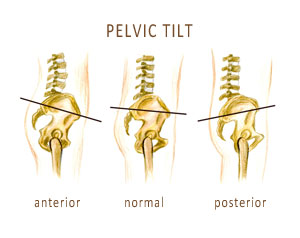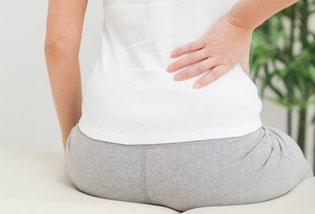A Solution When Your Back Hurts When Standing
Sherwin Nicholson | May 1, 2020

Are you in a lot of pain when you’re standing? Does it even feel better sometimes to sit instead?
The culprit is most likely a serious muscle imbalance that is straining your back.
But if you are finding the constant need to sit down for relief, then there is something better that you can do.
First off, the sensation of dull, aching pain you have may be either from a lumbar disc issue , facet joint pain, tight, weak muscles of the lower back or possibly something more serious.
We all have muscle imbalances (and should correct them before things get worse)
Watch out for your imbalances.
You can very easily have these injuries below without taking the time to correct them.
Pelvic Pain
A muscle imbalance can lead to pain because it can cause your pelvic tilt to move out of neutral position. A neutral position is what protects your discs from bulging. Your hip flexors have also become tight enough to exacerbate this tilt and to compress your discs as you stand.
Disc injury
The excessive bulge can result in herniated (ruptured) or prematurely degenerated discs (aging). Symptoms may or may not be present when you have disc bulge but is more apparent with a rupture or herniation.
Your pelvic tilt can either go from neutral, to an anterior or posterior tilt. An anterior tilt causes a disc bulge towards the rear of the spine.
Nerve injury
An increased bulge will place pressure on the nerve roots and the spinal cord and may generate nerve pain or a radiating sensation down your legs. It can also cause a numbing or tingling sensation depending on which area the nerve supplies the sensation to downstream.
Core failure
Weak abdominal muscles and tight lower back muscles will cause this anterior pelvic tilt. If you carry excess weight or have tight hip flexors, this will worsen your symptoms. Extra weight whether from a larger abdomen from diet or due to pregnancy will increase the severity of this tilt.
Increased Pain while Standing
When you’re standing, the pain in the lower back usually becomes progressively intense. It’s mostly likely because the angle of your tilt (anterior) is slowly intensifying the longer that you stand, a combination of disc pressure, facet joint irritation and muscle tightness is intensifying. This is because of the fatigue from supporting muscles that try to stabilize your pelvis.
Stress can also unconsciously tighten these muscles and contribute to the tilt. Anterior pelvic tilt is more common than posterior pelvic tilt. This happens because our more sedentary lifestyles contribute to weaker abdominal muscles, shortened quadriceps and tighter lower back muscles. This perfect storm pulls down on your pelvis from in front.
What you can do right away for the short term
To relieve this discomfort, you can sit down on a chair or try lying down. If you must remain standing, you can elevate one leg on a low stool or with some raised foot support. This will help to reduce your pelvic tilt and allow it to come back towards neutral.

If you have these symptoms not only when you are standing, but also upon standing, then your pelvic tilt may have become too anterior.
What you can do now for the long term
An excellent way to have relief is by performing the Deep Squat Rest. This squat should be performed first thing in the morning and routinely through the day. During times of anticipated extended periods of standing, carry out this squat for just a few seconds to help reduce your pain.
Initially, you may have difficulty reaching the lowest position. You may even believe that you are sufficiently lowered and that you cannot go lower. This is due to your imbalance of tight hip and lower back muscles. It is a positive indication of your need to address your anterior pelvic tilt.
If your body weight is preventing you from achieving the Deep Squat Rest, then go down as low as your weight will allow but do avoid the importance of the deep squat.
By following this exercise carefully and as accurately as possible, you will gradually be able to feel better. This exercise is an important beginning towards a healthier and more protected lower back.
This exercise will only treat one component of the many issues that lead to lower back pain. Since there are many muscles which can go out of balance, there is naturally a specific exercise that can benefit each one.
This site will help you to learn what areas of muscle imbalance will lead to your lower back discomfort and what you can do to reduce or prevent it. It is loaded with many tips and exercises that can help you now.
If you are looking for more great tips:
Your facets joints can be the reason
Do these simple moves to relieve your pain
Get the guide that teaches you all the right moves
References:
- www.back.com
- www.nih.gov (The National Institutes of Health)
- Chronic pain: How to approach these 3 common conditions – J Fam Pract. 2017 March;66(3):145-151,154-157 Author(s): Jill Schneiderhan, MD Carissa Orizondo, MD Department of Family Medicine, University of Michigan, Ann Arbor jillsch@med.umich.edu
- Chronic lbp and its association with lumbar vertebrae and intervertebral disc changes in adults. A case control study. – Karunanayake AL1, Pathmeswaran A2, Wijayaratne LS3. Int J Rheum Dis. 2017 Feb 16. doi: 10.1111/1756-185X.13026
